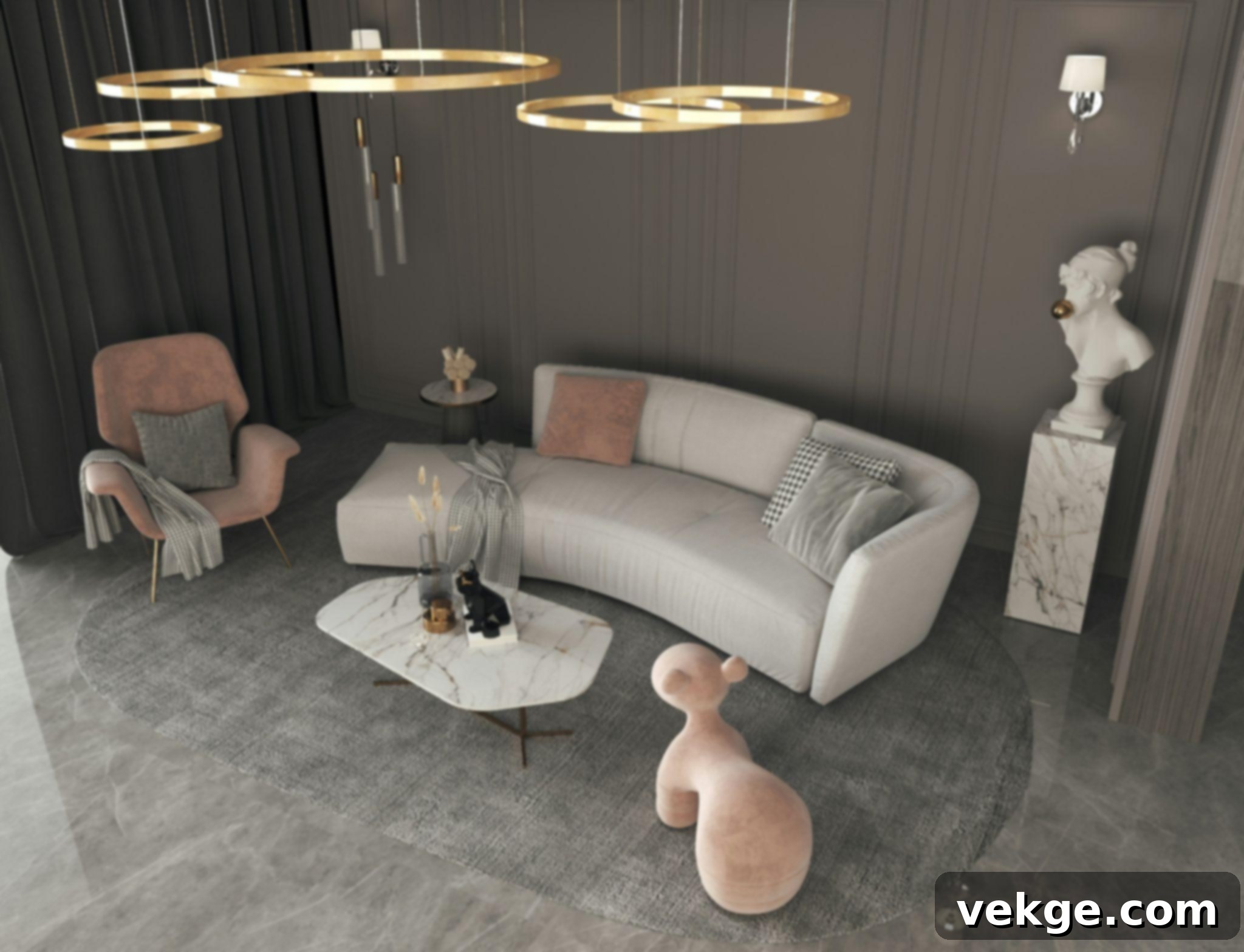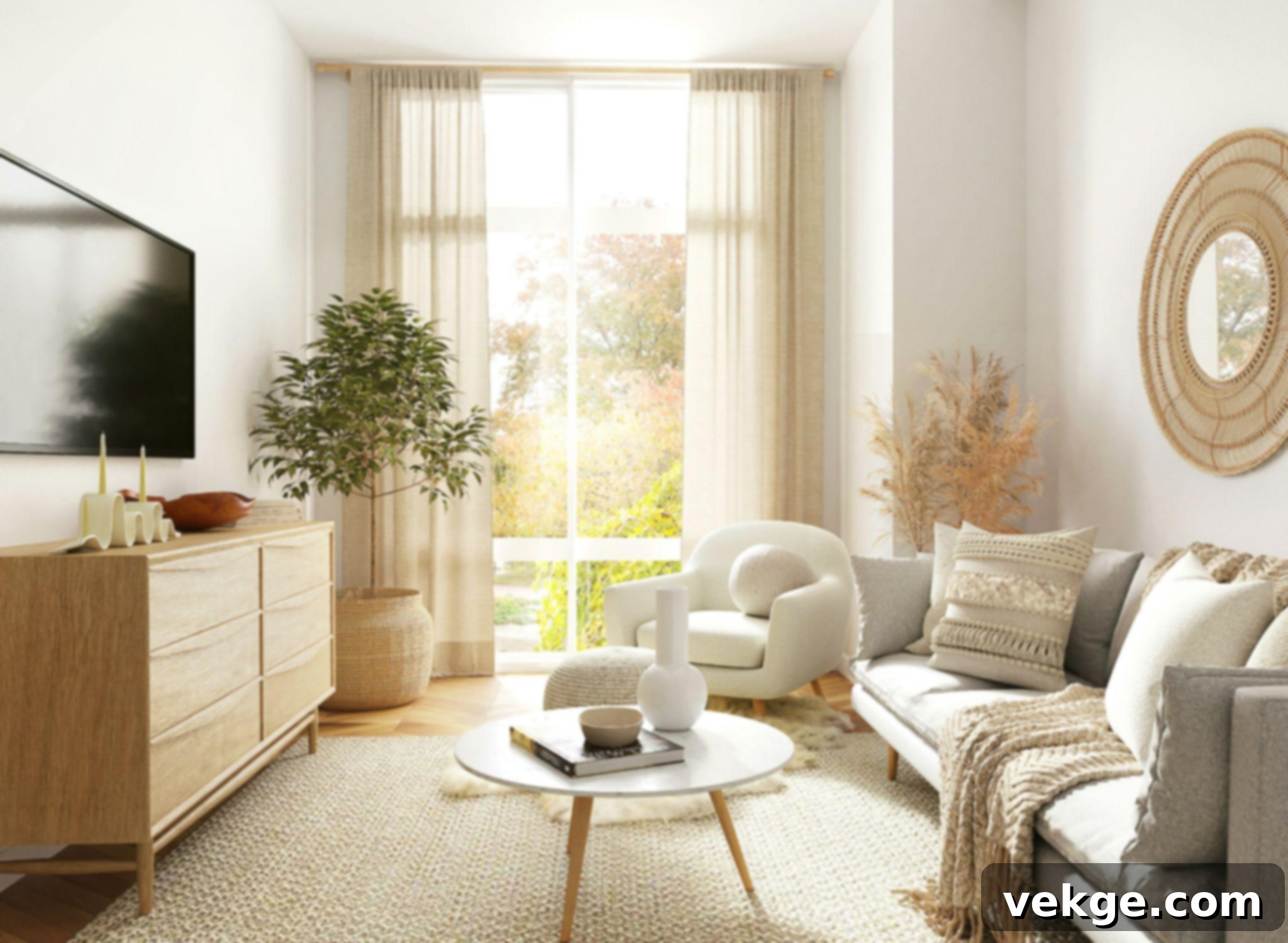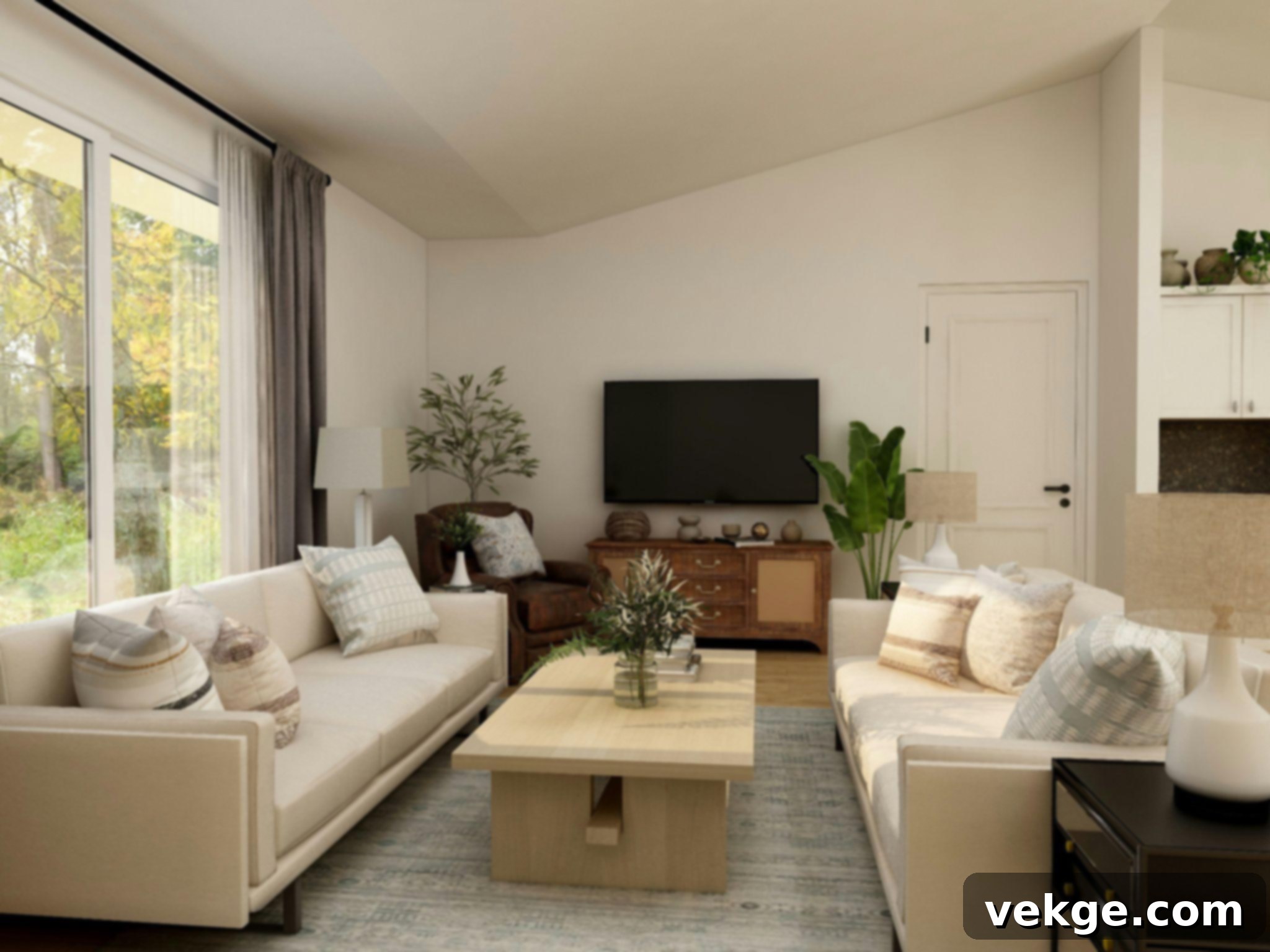The Art of Cozy Modernism: Crafting Inviting Living Rooms for Homes & Commercial Spaces
Source: Unsplash
Step into a space that instantly calms your senses and wraps you in comfort, and you’ve likely experienced the magic of a thoughtfully designed living room. In today’s evolving world of interior design, the most successful living spaces masterfully blur the lines between sleek, modern aesthetics and a profoundly lived-in warmth. This paradigm shift isn’t just for private residences; it’s transforming commercial environments too, creating highly functional yet deeply inviting atmospheres.
The outdated perception of commercial interiors as cold, stark, or impersonal is rapidly fading. Forward-thinking designers and property owners are now embracing a more human-centric approach, prioritizing relaxed layouts, ambient lighting, and rich, tactile furniture. Pieces like spacious 4-seater sofas for commercial fitouts are becoming staples, bringing a desirable residential feeling into public-facing environments such as hotel lobbies, co-working spaces, and client lounges. The ultimate goal remains consistent: to make every individual feel genuinely at ease and at home, regardless of whether they are a guest, a client, or an employee.
Why Comfort is King: Embracing the “Cozy Modern” Aesthetic
The contemporary design landscape is increasingly rejecting the notion that minimalism equates to minimal comfort. A significant global movement is underway, favoring living rooms that exude serenity, warmth, and authenticity. The era of perfectly pristine, glossy interiors, once celebrated on platforms like Pinterest, is giving way to a more layered, functional, and approachable aesthetic. These are spaces where people can truly unwind, kick off their shoes, and feel encouraged to linger. This shift is deeply rooted in our collective longing for connection and a sense of belonging in an increasingly fast-paced world.
This “cozy modern” philosophy is particularly impactful in versatile environments. Imagine the bustling lobby of a boutique hotel, a dynamic co-working lounge, or a premium serviced apartment. Here, the comfort and inviting nature of a well-appointed living room make an undeniable difference, influencing mood, productivity, and overall satisfaction. Picture tranquil neutral palettes enhanced by organic textures, expansive open-plan layouts softened by strategically placed area rugs, and streamlined furniture accented with plush cushions and throws. This harmonious blend creates environments that are not only visually appealing but also emotionally resonant.
Crafting Atmosphere: The Power of Texture and Light
An truly inviting living room transcends mere visual appeal; it’s about evoking a feeling, a mood. One of the most effective strategies to achieve that coveted modern-cozy balance is through the thoughtful integration of texture. Layering various textiles and materials adds depth, richness, and visual interest, even to the most minimalist of settings. Consider the tactile allure of knitted throws draped over a sofa, velvet cushions inviting a soft touch, the inviting embrace of boucle armchairs, or the grounding presence of timber accents. These elements collectively infuse warmth and character into otherwise sleek and contemporary spaces, transforming them into sanctuaries of comfort.
Lighting, too, is a crucial architect of atmosphere, playing a monumental role in defining a room’s character. To cultivate a truly cozy ambiance, designers are moving away from harsh, stark overhead lighting. Instead, the focus is on a symphony of warm-toned floor lamps, elegant wall sconces, and pendant lights featuring soft diffusers. This layered approach allows for adaptable lighting schemes, enabling occupants to adjust the mood from bright and functional to intimate and relaxed. Where natural light is abundant, the design strategy is to maximize its entry with airy, minimal window treatments that invite sunshine in. In essence, “cozy” isn’t merely a decorative style; it’s a deliberate lighting choice that profoundly impacts the sensory experience of a space.
Designing for Connection: Innovative Layouts and Seating
Beyond individual pieces, one of the most underestimated aspects of a comfortable and engaging living room is the intentional arrangement of furniture. It’s not simply about filling space; it’s about meticulously choreographing an environment that fosters interaction, encourages conversation, and promotes an effortless sense of ease. Across both private residences and commercial ventures, there’s a strong trend towards seating arrangements that feel organic, fluid, and inherently communal, breaking away from rigid, formal setups.
Larger, more substantial seating solutions often serve as the natural focal point, anchoring the room while providing ample space for multiple individuals. Think generously proportioned 4-seater sofas, elegant curved sectionals, or even a pair of facing sofas. In commercial fitouts, these types of substantial pieces are particularly strategic. They not only guide foot traffic subtly but also actively promote relaxation and collaboration, making them indispensable for upscale client lounges, dynamic creative hubs, and high-end rental units. To enhance flexibility and adaptability, these anchor pieces are often paired with lightweight, moveable side tables, comfortable poufs, or versatile ottomans, allowing occupants to customize their experience and create impromptu conversational clusters as needed. This thoughtful approach ensures that the layout prioritizes human comfort and interaction above all else.
The Global Appeal of Soft Modernism

Source: Unsplash
The term “soft modernism” has been coined by interior designers to encapsulate a highly popular trend: spaces that harmoniously combine the clean lines and functionality of modern design with an inherent softness and warmth. This aesthetic currently dominates living room trends, celebrating open layouts, balanced proportions, and a calming, muted color palette. Think soothing sage greens, earthy muted terracottas, sophisticated warm grays, and understated creams – hues that evoke tranquility and timelessness rather than stark contrast.
However, the concept of softness in this context extends far beyond the visual. It’s also deeply emotional. In an increasingly digital and often overwhelming world, people are instinctively craving comfort, authentic connection, and environments that soothe the soul. Soft modernism delivers precisely this, crafting interiors that feel emotionally intelligent and deeply restorative. To further personalize these spaces and imbue them with narrative, designers often integrate personal touches: curated bookshelves filled with beloved titles, carefully selected artwork that speaks to the owner’s personality, or vintage rugs that carry stories from generations past. These elements transform a mere stylistic statement into a rich, personal narrative, making the space truly unique and deeply resonant.
Cozy in Commercial Settings: A Strategic Advantage
A decade ago, the idea of applying cozy design principles to commercial interiors might have seemed unconventional, even counterintuitive. Today, however, it is not only widely accepted but has become an expectation. From upscale boutique hotels to contemporary medical waiting rooms and cutting-edge corporate offices, there’s a profound and growing understanding that people respond significantly better to environments that feel considered, comfortable, and human-centered. This strategic shift is driven by a recognition of the tangible benefits: improved client satisfaction, enhanced employee well-being, prolonged customer engagement, and a stronger brand identity.
This is where thoughtfully selected, large-scale seating solutions truly shine. Imagine generously sized sofas that offer ample space without visually overwhelming a room. These pieces create a sense of symmetry and balance, while their inviting presence encourages guests or clients to linger comfortably. When these are strategically paired with elegant coffee tables, luxurious soft textiles (like throws and cushions), and biophilic touches such as vibrant indoor plants, even the most traditionally corporate environment can be transformed. It begins to feel less like a sterile office and more like a meticulously styled, comfortable living room, fostering an atmosphere of trust and ease.
Small Touches, Monumental Impact: The Art of Accessorizing

Source: Unsplash
Creating a cozy environment doesn’t always necessitate a complete overhaul of your space. More often than not, it’s the nuanced, smaller details that yield the most significant impact. A well-chosen, chunky knit throw casually draped over a sofa arm can instantly invite relaxation. A discreet scent diffuser emitting calming notes like lavender or sandalwood can subtly elevate the mood. A carefully arranged stack of inspiring design books on a coffee table or a unique, hand-thrown ceramic bowl can infuse a sterile room with immediate warmth and personality. These are the elements that engage the senses and create an intimate, welcoming atmosphere.
Plants are another instant mood-lifter, offering both aesthetic beauty and practical benefits. Whether it’s a grand fiddle leaf fig commanding attention in a corner, or a row of elegant trailing pothos adorning a shelf above a sofa, greenery introduces vital life and natural softness into any interior. In commercial settings, the role of plants extends beyond mere decoration. They actively improve indoor air quality by filtering pollutants, regulate humidity, and are scientifically proven to reduce stress and enhance feelings of well-being. Incorporating biophilic design through plants is an effortless way to create a more relaxed, healthier, and ultimately more inviting atmosphere for everyone who inhabits the space.
The Global Shift: Designing for Wellness and Belonging
Across continents, a discernible movement is shaping contemporary design: a collective prioritization of spaces that foster wellness, cultivate a sense of belonging, and celebrate inherent beauty. Whether your project involves designing a private family home, furnishing a high-end rental property, or crafting a welcoming customer-facing area, the foundational principle remains consistent: the ultimate goal is to evoke positive emotions and create an environment where people feel genuinely good.
The overarching takeaway for modern interior design is clear: “modern” no longer implies sterile or cold, and “cozy” need not equate to cluttered or old-fashioned. When these two philosophies are thoughtfully and intentionally combined, the result is living rooms that function beautifully for everyone. These are spaces where individuals can effortlessly lounge for a leisurely weekend, engage in deep conversations, or comfortably await the start of an important meeting. This fusion of elements ensures versatility without sacrificing soul.
Ultimately, the most inspiring and successful living rooms of today are those that skillfully marry structure with softness. From the initial selection of finishes and materials to the meticulous planning of furniture placement, the focus extends beyond mere aesthetics. True design intention lies in considering how the space will *feel* to its occupants and how effectively it will accommodate their diverse needs and activities. By integrating larger, multifunctional pieces, layering various lighting sources, and enriching the environment with diverse textures, you design with purpose.
And when you design with such intention, your living room – regardless of its specific location or purpose – transcends mere style. It becomes soulful, unforgettable, and a true testament to the power of thoughtful design.
